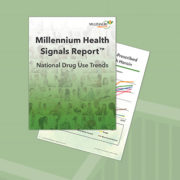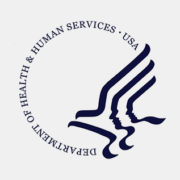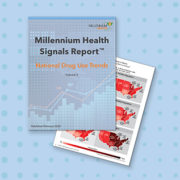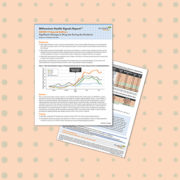Buprenorphine Study in JAMA
Millennium Health Publication in JAMA Network Open Highlights Drug Use Trends in Patients Treated with Buprenorphine for Opioid Use Disorder
SAN DIEGO, Calif. – September 14, 2021 – A JAMA Network Open study, led by Brendan Saloner, PhD, Associate Professor with Johns Hopkins Bloomberg School of Public Health, and co-authored by Millennium Health researchers, highlights the role of buprenorphine as a critically important medication for reducing harmful opioid use.
In 2020, drug overdose deaths reached the highest number ever recorded.1 In an HHS press release announcing new buprenorphine practice guidelines, Rachel Levine, MD, Assistant Secretary for Health for the U.S. Department of Health and Human Services stated, “Increases in drug overdose deaths emphasize the need to expand access to evidence-based treatments, including buprenorphine that can be prescribed in office-based settings.”2 While the number of individuals prescribed buprenorphine for opioid use disorder (OUD) is increasing,3 research evaluating the changing landscape of drug use in this population remains crucial, particularly due to the rapid growth of illicit fentanyl and methamphetamine use.
This JAMA Network Open study analyzed 150,000 urine drug test (UDT) results in patients prescribed buprenorphine for OUD between January 1, 2013, through December 31, 2019. Findings included:
- Patients whose specimens were negative for prescribed buprenorphine were significantly more likely to test positive for other substances than patients who were positive for prescribed buprenorphine
- Patients negative for prescribed buprenorphine were approximately 10 times more likely to test positive for heroin and 7 times more likely to test positive for fentanyl
- Nearly half of all patients prescribed buprenorphine were positive for one or more non-prescribed substances
- Overall, positivity rates increased 1,665% for non-prescribed fentanyl and 1,171% for methamphetamine among all patients prescribed buprenorphine over the study period
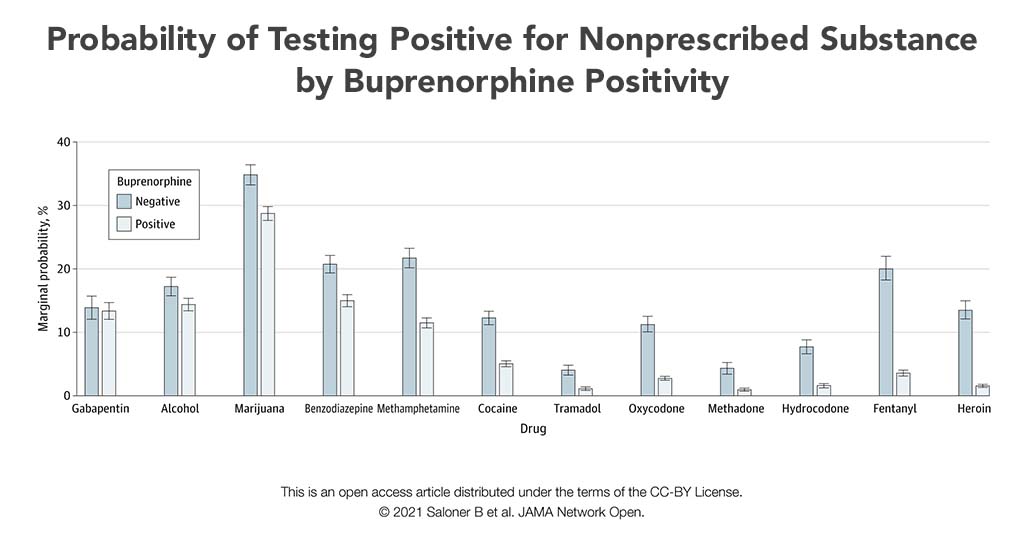
“We used our national database of UDT results to provide a detailed portrait of the evolving patterns of substance use for those prescribed buprenorphine for opioid use disorder. While patients who are positive for buprenorphine are much less likely to be positive for most other drugs, about half of all patients in this study were positive for a non-prescribed or illicit substance,” says Leah LaRue, PharmD, PMP and Director, Scientific Communications. “These findings highlight the role of buprenorphine as a critically important medication for reducing harmful opioid use, particularly when part of a comprehensive treatment plan.”
Chief Clinical Officer Angela G. Huskey, PharmD, CPE adds, “This study brings greater clarity regarding illicit drug use in patients treated for OUD and shows the utility of UDT data in public health surveillance efforts. Millennium Health remains committed to collaborative research efforts and data reporting through our Emerging Threat Intelligence Program™.”
The JAMA article can be accessed here.
About Millennium Health
Millennium Health is an accredited specialty laboratory with over a decade of experience delivering timely, accurate, clinically-actionable information through our nationwide medication monitoring and drug testing services. Clinical drug testing is used in various healthcare settings to obtain objective information about patients’ recent use of prescription medications and illicit drugs. Processing over a million specimens each year allows us to provide real-time analytics regarding emerging drug use trends, such as our studies published in JAMA and our most recent Millennium Health Signals Report™.
Media Contact
Jody Schneider
Millennium Health
(619) 917-6810
Jody.Schneider@millenniumhealth.com
References:
- Provisional Drug Overdose Death Counts. National Center for Health Statistics. Centers for Disease Control and Prevention Web site. https://www.cdc.gov/nchs/nvss/vsrr/drug-overdose-data.htm. Accessed August 13, 2021.
- HHS Releases New Buprenorphine Practice Guidelines, Expanding Access to Treatment for Opioid Use Disorder. U.S. Department of Health and Human Services Web site. HHS Releases New Buprenorphine Practice Guidelines, Expanding Access to Treatment for Opioid Use Disorder | HHS.gov. Published April 27, 2021. Accessed August 13, 2021.
- Substance Abuse and Mental Health Services Administration. (2020). Key substance use and mental health indicators in the United States: Results from the 2019 National Survey on Drug Use and Health (HHS Publication No. PEP20-07-01-001, NSDUH Series H-55). Rockville, MD: Center for Behavioral Health Statistics and Quality, Substance Abuse and Mental Health Services Administration. Retrieved from https://www.samhsa.gov/data/.


